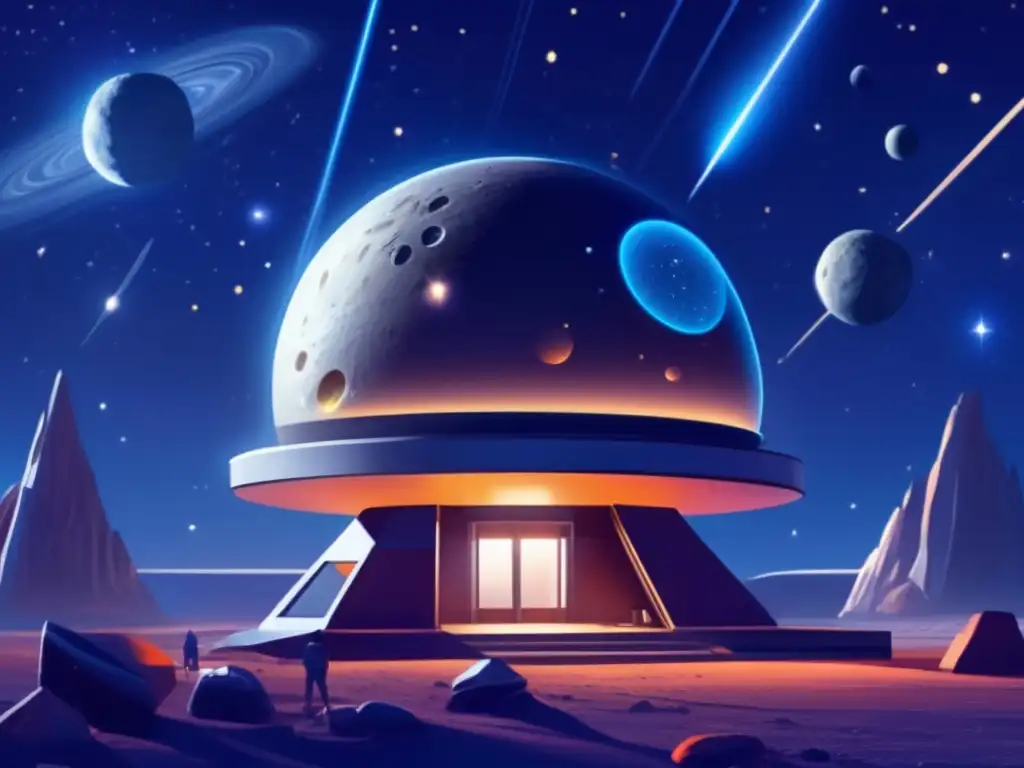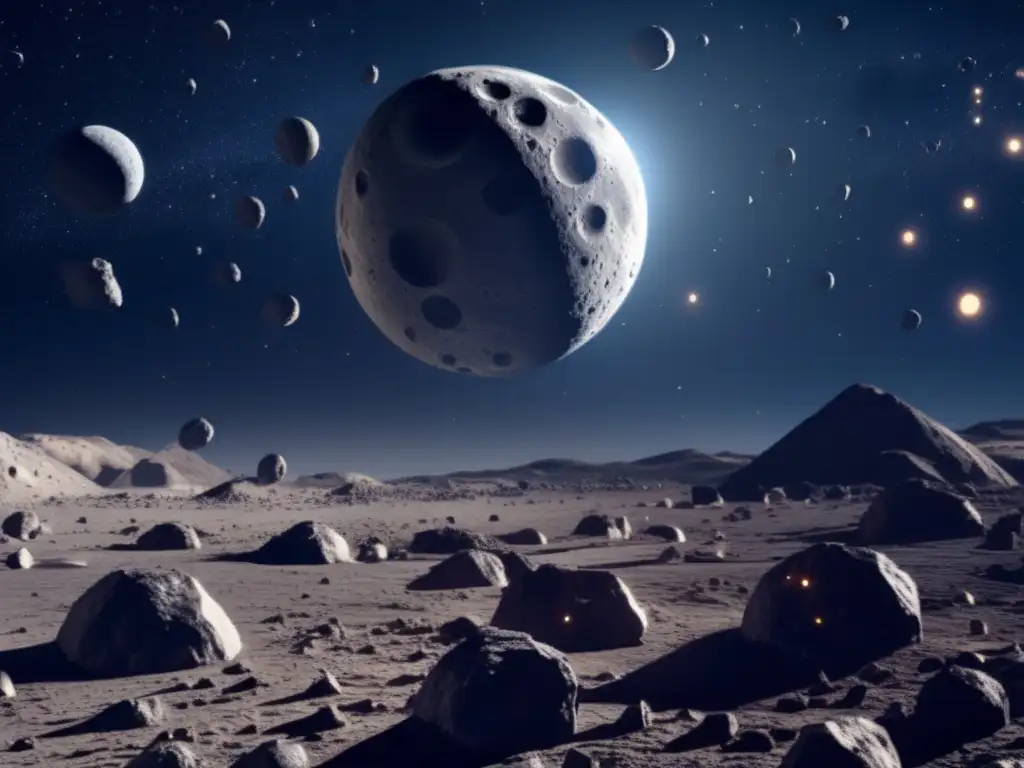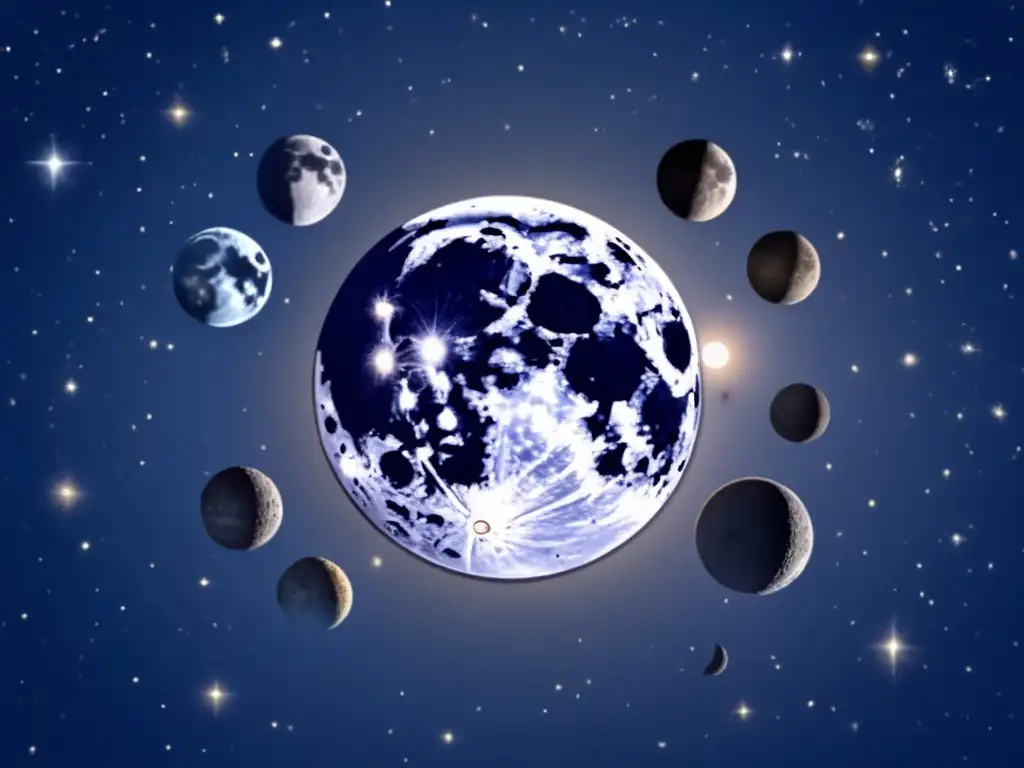The Influence Of Moon Phases On Asteroid Observation

Introduction
Asteroids, the celestial objects that orbit the Sun, have captivated the human imagination for centuries. With their mysterious origins and potential impact on Earth, studying asteroids is crucial for our understanding of the universe. One factor that can significantly affect asteroid observation is the phases of the Moon. In this article, we will explore the influence of moon phases on asteroid observation and how it impacts astronomers' ability to study these fascinating objects.
The Importance of Dark Skies

Effect of Moonlight on Observability
Moonlight can make a significant difference in how visible asteroids are to astronomers. During a full moon, the night sky becomes much brighter, making it challenging to spot faint objects like asteroids. The strong glare from the Moon's reflected sunlight can wash out the small, dim light emitted by asteroids, rendering them nearly invisible. As a result, astronomers often prefer darker skies, such as those during the new moon, to enhance their chances of detecting and studying asteroids.
Implications for Scientific Research
Dark skies free from the Moon's interference are especially vital for scientific research involving asteroids. Researchers rely on accurate observations of asteroids to determine their characteristics, such as size, composition, and rotation rate. Detailed studies enable scientists to refine predictions of potential asteroid impacts and evaluate future space missions. The presence of the Moon's bright illumination can hinder data collection and analysis, limiting our understanding of these enigmatic objects.
Optimal Moon Phases for Asteroid Observation

New Moon and Crescent Phases
The new moon phase, when the Moon appears completely dark, provides the ideal conditions for asteroid observation. With minimal lunar interference, astronomers can observe fainter objects and detect asteroids that might otherwise escape notice during brighter moon phases. The crescent phase, with a small illuminated portion, can also be favorable for observing certain asteroids. During this phase, the Moon's brightness is significantly reduced, making it easier to spot asteroids against the darker background of the sky.
Challenges of Gibbous and Full Moon Phases
Conversely, the gibbous and full moon phases present challenges for asteroid observation. The illuminated portions of the Moon dominate the night sky, making it harder to discern asteroids against the bright backdrop. However, advancements in technology, such as adaptive optics and specialized filters, have improved astronomers' ability to mitigate the adverse effects of moonlight, allowing for some observations even during these phases.
Impact on Amateur Astronomers

Accessible Opportunities
Moon phases can significantly affect the experiences of amateur astronomers who lack access to advanced equipment or observatories. During new moon periods, when the Moon is not visible, amateurs have a better chance of observing asteroids with their telescopes. This makes it more accessible for enthusiasts to contribute valuable data to the scientific community, enhancing our understanding of these cosmic bodies.
Awareness and Planning
Knowledge of moon phases is crucial for amateur astronomers planning their stargazing sessions. By avoiding nights with bright moon illumination, amateurs can optimize their chances of asteroid detection and enjoy a clearer view of the night sky. Many astronomical websites and applications provide moon phase calendars, enabling enthusiasts to anticipate and prepare for the most favorable observation conditions.
Frequently Asked Questions

-
How does the Moon affect asteroid visibility?
The Moon's brightness can make spotting asteroids more challenging, particularly during phases of increased illumination like the full moon. The darker the skies, such as during the new moon, the easier it is to observe faint objects like asteroids.
-
Can astronomers observe asteroids during all moon phases?
Astronomers can observe asteroids during all moon phases, but the bright illumination from the Moon during full and gibbous phases makes it more difficult to detect faint asteroids. The new moon and crescent phases offer better conditions for asteroid observation.
-
How can amateur astronomers optimize asteroid observation?
Amateur astronomers can optimize their chances of observing asteroids by planning their sessions during moon phases with minimal lunar interference, such as the new moon. Being aware of moon phase calendars and utilizing darker nights enhances their opportunities for observation.
-
What technology assists astronomers in mitigating moonlight interference?
Advancements in technology, such as adaptive optics and specialized filters, help astronomers mitigate the adverse effects of moonlight on observations. These tools enhance visibility and allow for data collection even during brighter moon phases.
-
How can amateurs contribute to asteroid research?
Amateurs can contribute valuable data to asteroid research by observing and reporting their findings to scientific organizations. During moon phases with minimal lunar interference, amateurs have a greater chance of spotting asteroids and adding to our collective understanding of these celestial objects.
Conclusion
The influence of moon phases on asteroid observation is a vital aspect of studying these intriguing cosmic objects. The brightness of the Moon can considerably impact astronomers' ability to detect and study asteroids, and different moon phases offer varying levels of observability. By understanding and planning observations around moon phases, both professional and amateur astronomers can optimize their chances of contributing to our knowledge of asteroids. Let us continue to explore the wonders of the universe and unlock the secrets held within these captivating celestial bodies.
Encourage the reader to share their thoughts in the comments section and to positively interact with www.asteroidrealm.com, whether by subscribing, sharing the article on social networks, or other forms of participation. Thank the reader for their time and attention.
Additional Resources

For additional resources and information on asteroids and related topics, please refer to the following:
 The Evolution Of Telescopes And Asteroid Observation
The Evolution Of Telescopes And Asteroid Observation Astronomy Clubs And Their Role In Asteroid Observation
Astronomy Clubs And Their Role In Asteroid ObservationIf you want to discover more articles similar to The Influence Of Moon Phases On Asteroid Observation, you can visit the Telescopes and Asteroid Observation category.
Leave a Reply

Articulos relacionados: